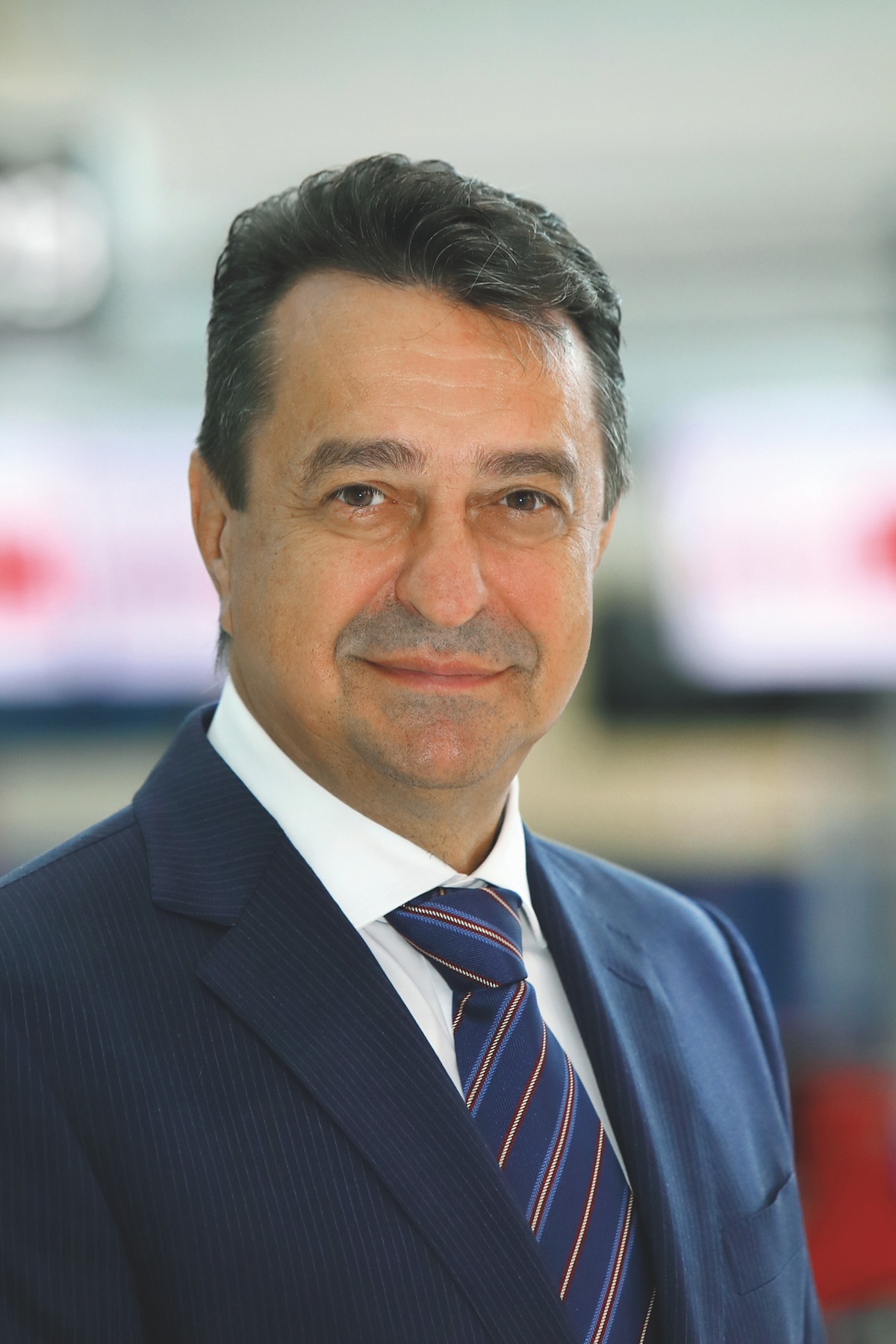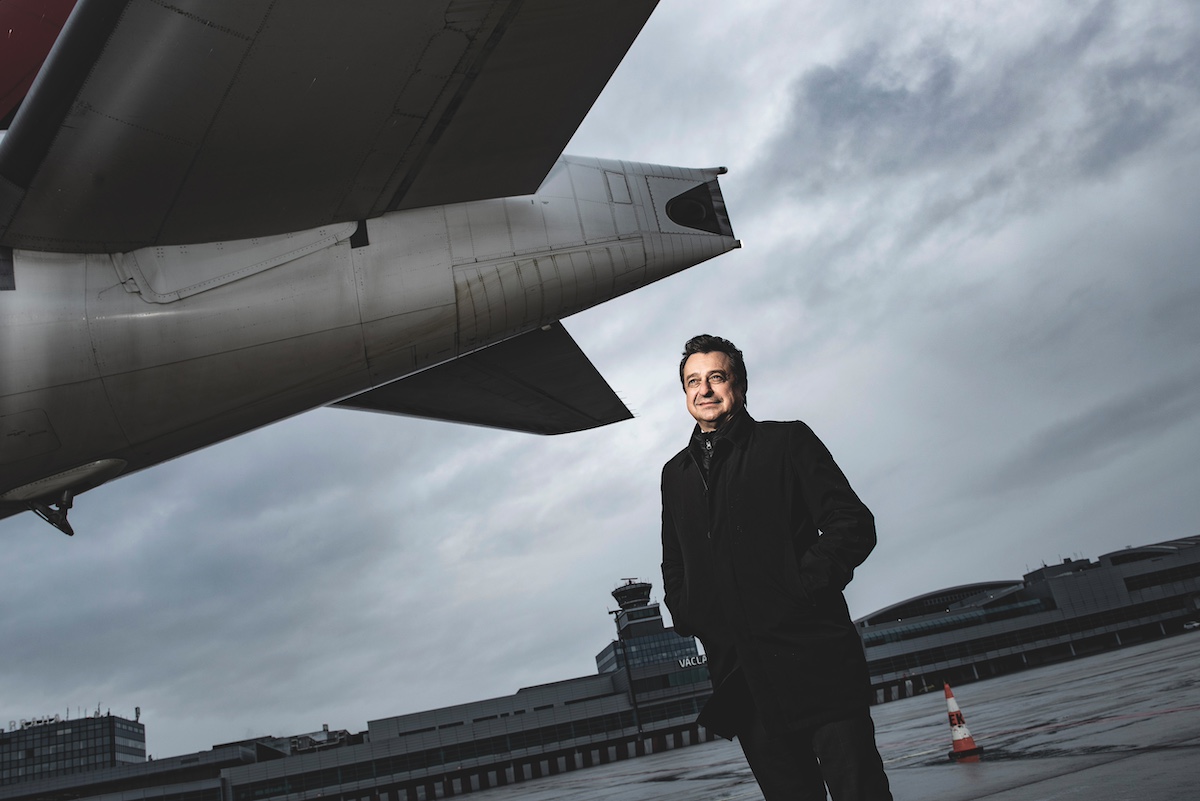Stronger than last year

Jiří Pos, Chairman of the Prague Airport Board of Directors
Text: Martina Hošková and M.Zisso; Photo: Archive
Tell us about yourself. You started your career in aviation in 1986 at Czech Airlines. What made you choose this sector?
Imagine me as a little boy, who, many years ago, used to ride a bicycle with his friends to the threshold of the Ruzyně Airport runway. My parents and I lived in Prague 6, so the airport was just around the corner. Together with my friends, I’d lie down on the grass and watch the planes take off and land. It felt so amazing.
I started dreaming of becoming a pilot. That didn’t work out for me because of my colour blindness, but I wanted to stay close to aircrafts no matter what. After graduating from university, I got a job at Czech Airlines, where I spent twenty unforgettable years. In 2006, I moved to Prague Airport, the company which I managed between the years 2011 and 2014 and which I have the honour of managing for the second time since 2021, working with my colleagues from the Board of Directors.
With this life-long valuable experience, can you give a piece of advice to the next generation in aviation?
I really don’t wish to be in the role of a mature man mentoring young people. In my opinion, you should follow your dream, whether it is related to aviation or any other goal in life. We have had a Talent Pool program in our company for many years – it is a program for young people who want to develop their potential.
I like learning the details of the projects which were created in this way, and the enthusiasm and energy of the participants in this program make me happy. Intergenerational sharing is important, so sometimes, I, on the other hand, learn from the younger people.
As an expert in the field of civil aviation and tourism, how do you see its future worldwide?
Currently, it is still difficult to predict the future. We have been through a global pandemic and an energy crisis, the conflict in Ukraine continues, and the Middle East has, once again, become a hotbed. We can say with certainty that while, in terms of the number of passengers handled, most airports have already returned to their pre-COVID-19 levels, it’s been taking Prague Airport a little longer as we had a large share of passengers on routes between the Czech Republic, Russia, and Ukraine. However, we are currently the fastest growing airport in our category. It turns out that even the most difficult period in the history of civil aviation, experienced during the COVID-19 pandemic, has now been replaced with growth and the breaking of past records, which seems only natural. Going on holiday to exotic destinations and visiting famous places or friends will continue to be a part of the modern way of life, which is good news for the entire aviation segment. Internationally renowned institutions such as IATA and ACI Europe currently predict a long-term 4% growth in the number of handled passengers.
Numbers are always interesting. Can you give us a few regarding Prague Airport?
We originally estimated we would handle 15.5 million passengers this year, but are now definitely expecting that figure to exceed 16 million. As part of the summer flight schedule, almost 70 carriers offer direct flights from Prague to 170 destinations, including new additions, namely Beijing, Cairo, Florence, Verona, Astana, Tallinn, and Chisinau, as well as popular holiday destinations such as Brindisi, Izmir, La Palma, and Ponta Delgada.
How does Prague Airport compare to other European airports?
We were pleased to be ranked among the top 5 airports in Europe last year by Google users. It proved that passengers like Prague Airport, and that it offers quality services of a high standard. This achievement was also affirmed by the ASQ international benchmark by ACI Europe (Airports Council International). Based on this, we compare ourselves to European airports of a similar size. Last year we received a rating of 4.18 on a five-point scale, and ranked in second place behind Helsinki.
What future developments are you planning?
One of the pillars of our key strategy, titled Prague Airport – Ready for the Future, is the development of the airport capacity – primarily the expansion of the operating areas of Terminal 2, the construction of a central security screening point in Terminal 1, an increase in parking capacity, and more efficient organisation of traffic in the airport area. We estimate the first phase implementation costs at 32 billion crowns. We are currently at the stage of architectural proposals and design. But, as they say, ‘near is my shirt, but nearer is my skin’, so I would like to specifically mention this year’s achievements. Since March, passengers have been able to use a modern large-capacity trolleybus for their journey to and from the airport. We have been expanding the self-check-in options, and upgrading the range of airport shops and restaurants. In the summer, we are planning to open a duty-free walk-through zone in Terminal 2.
The high season is at the gate. What awaits us at Prague Airport when we come to board our holiday planes?
We expect this summer to be even stronger than last year. We plan to handle 3.6 million passengers in July and August, which is 400,000 more than in 2023. This increase will be possible not only thanks to new routes, but also thanks to increased capacity and frequencies to a whole range of destinations.
Passengers are advised to arrive at the airport no later than two hours before the scheduled departure time, and head straight to the check-in counter or use the self-check-in kiosks. They should then proceed directly to security or passport control, where they can save time by using self-service border checks. At the same time, everyone should pay attention to the validity of their documents, and take into account that it is not yet possible to use electronic ID cards for trips abroad. In addition, passengers are advised to check the boarding time on their boarding pass and arrive at the boarding gate on time. The time for boarding the aircraft differs between individual airlines, with some airlines ending boarding as early as 30 minutes before departure.
Some passengers may be worried about security due to the troubled situation in the world. Is Prague Airport ready for that?
I believe that travellers have nothing to fear in Prague. Prague has long been rated as one of the safest destinations in Europe, and we also do our best to ensure passengers enjoy their trips without negative experiences.

Jiří Pos, Chairman of the Prague Airport Board of Directors
How does Prague Airport ensure its continued positive relationship with the surrounding community?
The desire to be a good neighbour is in Prague Airport’s DNA. Our relations are based on long- term and regular communication with the management of municipalities and city districts in the vicinity of the airport, as well as with the residents of these domiciles. We organise, for example, Neighbourhood Afternoons, and we run a Good Neighbour grant program to support events and activities that improve life in the neighbourhood, etc. At the same time, we are developing the Airport City concept, thanks to which, in the future, the airport will offer a number of services to its surroundings that are outside of our core business. These are, for example, educational, health, sports, and cultural facilities within the airport premises.
Generally said, a successful manager always has a good team behind them. Is that correct about you?
That’s exactly right. They say that a good manager leads people by being above them, while a great manager leads his team by also being one of its members. This is my way. The most difficult thing is probably to balance the working conditions so that they are not too loose, but at the same time not too restricting. I am very much inspired by the samurai culture – the main virtues of the samurai were courage, honour, justice, and loyalty. We have been trying to project these virtues onto our company culture for a long time.
What do you see as the most difficult part of your role?
Harmonising all relationships and goals within and outside our company, and attempting to remove unnecessary obstacles toward achieving maximum efficiency.
Surely, you have experienced many interesting situations at work. Can you share one of the most weird ones?
In 2010, holding a position in Prague Airport management, I was in charge of the crisis team established to deal with the four-day air traffic grounding throughout Europe after the eruption of a volcano in Iceland. It was all the more bizarre because the weather was gloriously sunny in those days, and no one understood why flying should be disrupted.
Let’s conclude with a more personal question. How do you spend your free time?
The number one thing is dedicating time to my family. My son plays hockey and football, and enjoys other sports. In that respect, I’m a bit of a taxi driver, an encouraging father, and the biggest fan. With my wife, who divides her working time between the PlanetZen massage studio, which she co-owns, and shifts as a cabin manager at Czech Airlines, we like to travel, play golf, ski, and simply spend our free time actively.

